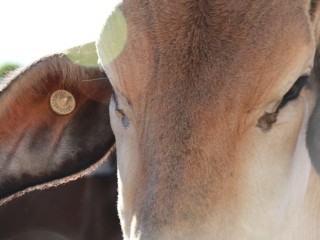 Attractive rates for live export steers in Darwin and wet season restrictions on northern supply have seen cattle being drawn from as far south as South Australia, Southern Queensland, and even New South Wales to fill export orders to South East Asia in recent months.
Attractive rates for live export steers in Darwin and wet season restrictions on northern supply have seen cattle being drawn from as far south as South Australia, Southern Queensland, and even New South Wales to fill export orders to South East Asia in recent months.
Making the long-distance lifts viable are prices of 230c/kg for feeder steers in Darwin, which are being offered out until June as exporters try to secure lines of supply to keep chartered shipping fully utilised.
Northern livestock agency and transport industry sources have told Beef Central this week that cattle to fill export orders from both Darwin and Townsville have been sourced from as far south as the Northern Territory/South Australian border, the channel country and areas of southern Queensland including St George.
There is also talk that a line of Brahman cross cattle has been transported from as far south as Goulburn between Sydney and Canberra for export from Darwin.
Moving cattle from Queensland/NSW border areas to Darwin is likely to cost in the vicinity of 60-70c/kg ($190-$230/hd for a 330kg steer). However, even with that expense, the 230c/kg available in Darwin still compares well when held against the limited selling opportunities available for Brahman/Brahman cross feeder steers in the drought stressed and oversupplied markets of Southern Queensland.
One northern agent told Beef Central that prices for 450kg slaughter weight cattle of 180c/kg at Charters Towers for export from Townsville compared favourably to prices of 140c/kg for similar steers at prime sales in Southern Queensland.
The supply outlook for exporters is set to tighten further following widespread storm rain in the past week. Those producers fortunate enough to receive decent falls will now benefit from some breathing space, with many no longer facing the same pressure they were under to sell stock under duress.
'Unprecedented disparity' between NQ and SQ meatworks rates
The bourgeoning demand for slaughter cattle for live export into South East Asia has also contributed to something of a rare disparity in meatworks pricing grids between northern and southern Queensland.
Prices currently on offer for bullocks in Townsville are 10c/kg higher than prices being offered at Rockhampton, which in turn are 5c/kg higher than available rates in South East Queensland.
Grid prices quoted to Beef Central today have four-tooth ox in Townsville at 350c/kg; in Rockhampton at 340c/kg and at Dinmore at 335c/kg.
Long-time northern agents have told Beef Central this week they believe the price difference between the north and the south is unprecedented, barring the odd short-term weather-related supply issue or occasional end-of-year distortion.
For producers the price situation is a welcome turnaround after consecutive years of depressed market conditions, forced down by Indonesia’s decision to slash import orders and limited demand from other South East Asian markets.
Exporters are now feeling the squeeze, having to pay top dollar to secure cattle at one end, while facing even stronger than usual resistance to price increases from importers at the other end, in addition to the now-usual complications of a continually fluctuating $A.
It is no secret that cattle importers always want to buy cattle at the cheapest possible price, they're business people, just like any others, after all. But this year there is added pressure on pricing at the Indonesian end from an Indonesian Government that is hell-bent on bringing prices down for consumers in wet markets. Jakarta has made it clear to importers this year it will be closely monitoring the prices at which finished steers are sold to the market, expecting those prices to support its overall goal of bringing consumer prices, and in turn inflation, down.
As one experienced northern cattle industry source told Beef Central this week, the squeeze is likely to tighten as the year progresses, which will leave exporters with a difficult choice: whether to keep ships under charter occupied and lose money, or whether to cut the price delivered to the importer and lose money. “It is a no-win situation either way,” he said.
